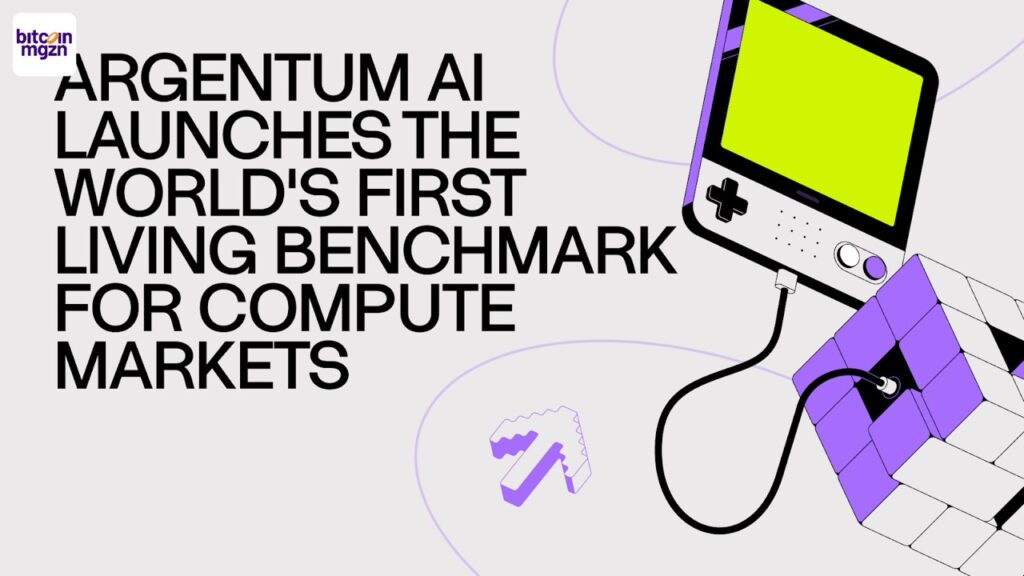Disclosure: This article does not represent investment advice. The content and materials featured on this page are for educational purposes only.
Canxium positions itself as an alternative to Bitcoin and stablecoins by introducing demand-driven supply and predictable mining costs aimed at making crypto usable as electronic cash.
Summary
- The Canxium project adjusts coin supply based on transaction demand to limit volatility.
- Its mining model sets costs in advance, offering more predictable economics.
- Canxium’s design aims to support everyday use rather than speculation.
In crypto, two problems dominate: volatility and centralization. Launched in 2023, Canxium (CAU) has grown into a project with a market cap around $400k to $430k and a current price range near $0.32 to $0.34, according to CoinGecko and CoinMarketCap. The Canxium system is designed to promote more predictable and decentralized mining costs, aiming to improve usability as cash, though past performance and technical mechanisms do not guarantee future results or full price stability.
This article explains why Bitcoin and stablecoins fail as cash, how Canxium aims to address some of the challenges observed in traditional PoW and stablecoin models through its demand-driven supply and Retained Proof of Work (RdPoW), and what this means for miners, users, and the future of electronic money.
Volatility and centralization
Bitcoin, the progenitor of crypto, promised peer-to-peer electronic cash but devolved into a speculative asset. Its rigid 21 million supply cap ignores real demand, leading to wild price swings driven by hype rather than utility. Booms draw in miners, spiking difficulty and energy bills, while busts trigger mass exits and erode security. Transaction fees explode during congestion and far from Satoshi’s ideal.
Stablecoins such as USDC and USDT provide stability by pegging to fiat currencies and are managed by centralized entities, which some criticize for resulting in counterparty risk and less decentralization, though they remain popular solutions in the market. Pegged to fiat, they offer apparent stability but at the cost of decentralization. Controlled by issuers like Circle or Tether, they are vulnerable to freezes, blacklists, and regulatory whims. Billions in reserves sit in opaque banks, inviting censorship and counterparty risk.
The crypto industry, riddled with these contradictions, has failed to deliver true money: a medium of exchange that is stable in production, adaptive to markets, and free from central control.
Stable mining costs through demand-driven supply
At Canxium’s heart is a revolutionary supply mechanism that mirrors natural markets and ensures stable mining costs while remaining fully decentralized. Unlike Bitcoin’s arbitrary halvings or stablecoins’ algorithmic tweaks, CAU issuance responds directly to demand. High transaction volume signals need and prompts more CAU production to keep fees low and prevent bottlenecks. Low demand curtails supply, avoiding inflationary dilution and preserving scarcity.
This dynamic is powered by Retained Proof of Work (RdPoW), where miners compute proofs offline and submit them flexibly, fixing costs per CAU unit regardless of external volatility. Energy, hardware, and time inputs yield predictable outputs anchored by real-world economics rather than speculative frenzy. As Canxium’s documentation asserts, this creates a “cost floor” for CAU, where each token’s production mirrors tangible value creation.
The egg market analogy
To illustrate, consider the egg market. Farmers produce eggs at a roughly fixed cost: for example, $1 per egg for feed, electricity, water, and stock. When demand surges, perhaps during holidays, prices rise to $1.50. Farmers pocket $0.50 profit per egg, incentivizing expansion with more hens and more output. Supply increases, easing scarcity and pulling prices back toward $1.
Conversely, if demand drops and prices fall to $0.70, farmers incur losses. They scale back with fewer hens and less feed, reducing supply until balance restores prices to $1. No central authority dictates quotas. The market self-regulates through incentives.
CAU operates identically. Miners produce tokens at a stable cost, but output scales with demand. Rising usage boosts rewards, drawing more miners and expanding supply to meet needs, which prevents fee spikes like Bitcoin’s. Falling demand reduces incentives, contracts supply, and stabilizes value without inflation. This equilibrium is designed to make CAU a competitive option for electronic cash use cases: predictable for users, profitable yet fair for miners, and immune to manipulation.
Hybrid features and advantages
Hybrid features amplify this dynamic. Validators stake 320 CAU for PoS governance, adding security layers, while a 1 CAU smart contract fee deters spam. Multi-algorithm support, including Bitcoin ASICs, ensures broad accessibility, and offline mining opens doors to underserved regions.
For miners, Canxium’s model seeks to reduce the volatility of mining rewards and promote decentralization among participants. Predictable costs mean sustainable operations that empower small-scale participants over corporate farms. Miners thrive on demand signals, not speculation.
For users, Canxium delivers real electronic cash. Low, stable fees enable seamless P2P transfers and DeFi without Bitcoin’s congestion or stablecoins’ censorship risks. CAU’s value, backed by verifiable work and market forces, offers a third way: mineable like BTC but adaptive like fiat, without the flaws.
Roadmap and ecosystem growth
The industry already feels the impact. Canxium exposes Bitcoin’s rigidity as outdated and stablecoins as counterfeit. By fostering organic growth, it resists pump-and-dump schemes and builds a resilient economy. Recent integrations, such as cross-mining with Kaspa and the upcoming Ravencoin hardfork, further unite PoW networks, while stable costs remain the differentiator.
As of September 2025, Canxium’s roadmap roars ahead. From the 2023 mainnet to ongoing enhancements, including defenses against rivals like Qubic via unified incentives, the project continues to advance. Community buzz on X highlights CAU’s edge with statements like: ‘No more volatile mining. CAU is the real deal for decentralized money.’
The dawn of true electronic cash
This is not evolution but revolution. Canxium is fighting crypto’s status quo and arms the masses with stable, demand-driven electronic cash. For traders spotting the next paradigm shift, miners seeking equity, and visionaries demanding purity, the call is clear. Canxium’s project seeks to contribute innovative solutions to the ongoing development of digital money.
Disclosure: This content is provided by a third party. Neither crypto.news nor the author of this article endorses any product mentioned on this page. Users should conduct their own research before taking any action related to the company.
Source: https://crypto.news/canxium-a-demand-driven-solution-to-crypto-volatility/



